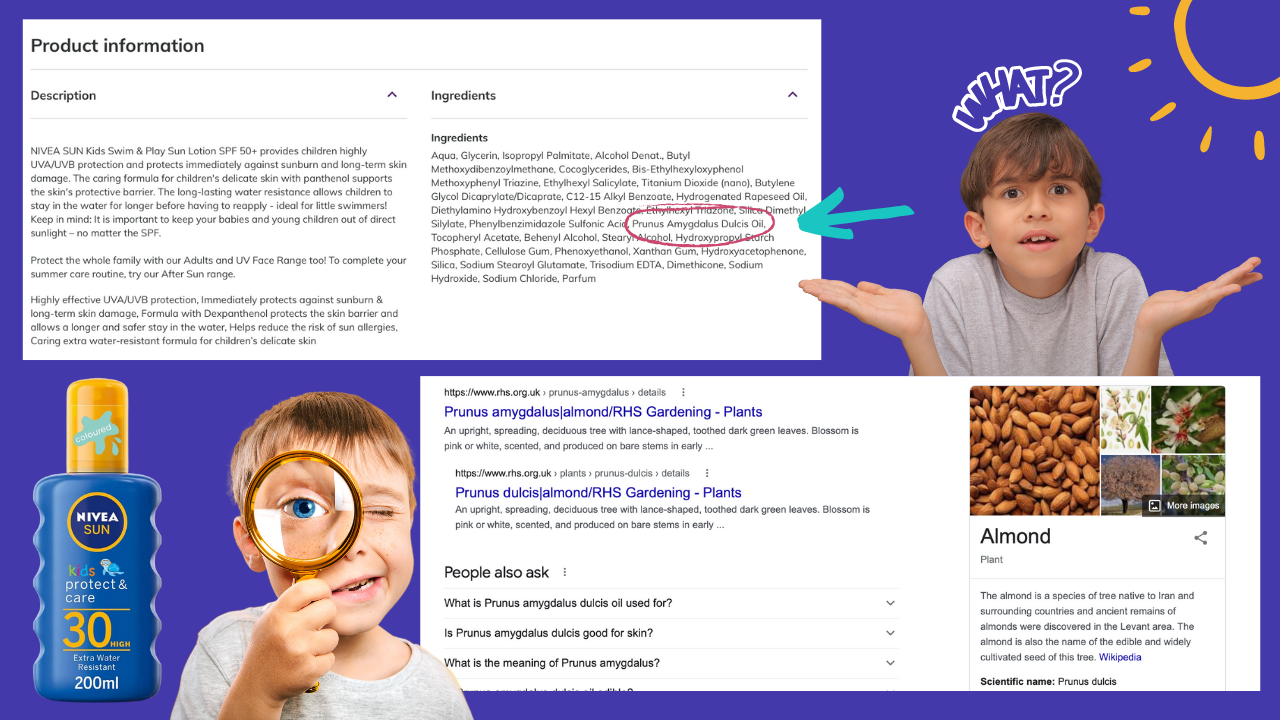The Fear of Allergens in Skin Products is for Good Reason
The recent outrage over Nivea’s introduction of almond oil to their children’s sunscreen, went viral on social media. Parents of allergic children just couldn’t understand why the oil of a known allergen had been added. Nivea’s official response was somewhat surprising, first citing that there is no threat to anyone with almond allergy because the oil is refined, but then adding that those with concerns should contact their GP before using the product.
It was only 3 years ago in 2019, when a teenager experienced an allergic reaction from a Nivea lip balm that contained almond oil, it was labelled with its Latin name, Prunus Amygdalus Dulcis which she didn’t recognise. Food ingredients in cosmetics, toiletries and hygiene products don’t have to be written in English or highlighted in bold if they are a top 14 allergen.
Allergic reactions that are triggered by skin-contact are more prevalent in highly allergic children and adults. They will have high IgE levels and strong reactivity to foods by skin prick testing or RAST and can experience severe allergic reactions from exposure to very small quantities of food allergens by skin-contact or inhalation.
It is also known that children with eczema are more likely to have food allergies. Small gaps in the skin make it dry out quickly and let germs and allergens into the body, so when allergens enter the skin, they prompt the body to make chemicals that lead to redness and swelling. This may help explain why those with eczema have outbreaks when they’re around their allergens. Keeping eczema skin as moisturised as possible with emollients, creams and ointments especially early in a child's life, may help prevent eczema, food allergies and other allergic diseases from developing.
Unfortunately, when food particles are introduced through the skin rather than the digestive system, they are much more likely to cause allergies. The eczema cracks in the skin often set off a chain of allergic diseases that develop over several years.
When Natasha was little, she had painful eczema. At 10 months old she had already experienced two anaphylactic reactions, one to banana and the other to dairy milk formula so we were careful to keep her away from all known allergens until she could be tested. One evening as we prepared to bathe her in a well-known bath-cream, heavily marketed for babies and children with eczema, Natasha’s father looked at the ingredients and said to me, “Did you know this contains peanut oil?” I asked him where, as I hadn’t seen anything in the ingredients that concerned me. And there it was, but written in French, ‘huile d'arachide.’ I couldn’t believe we had been bathing our daughter for many months in peanut oil and why was the ingredient written in French?
It’s very possible that this bath-cream triggered Natasha’s allergies; we will never know for sure but I am still outraged after all these years, that peanut oil was an ingredient in a product marketed for babies and children with eczema.
We are all wiser with the gift-of-hindsight, but adults with allergies and parents of allergic children can’t afford this luxury. We need brands to take the issue of introducing allergen ingredients to their products - even if they are refined, very seriously.







